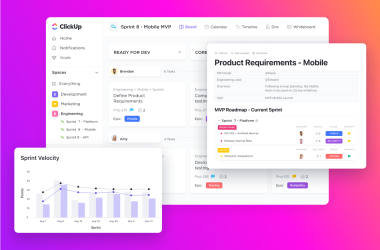Are you constantly racking your brain for the best way to generate leads for your brand? Finding it tough to convert your website traffic into potential customers?
If you answered “yes” to either of those questions, then you’ve come to the right place. There are several tactics you can use to spark consumer interest in your products and services – and turn those casual visitors into promising leads.
So, let’s dive into five of the most effective website lead-generation tips.
- Let your website speak for itself
- Understanding customers’ needs and present your product as the solution
- Hit the foundations of lead generation with precision
- Laying out the buyer’s journey
- Invest in quality content
Let your website speak for itself!
A website is a consumer’s sneak peek into the brand. As a result, one of the best ways to lift your product visibility and boost leads is to let the website speak for itself. Wondering how? Check this out:
Focus on bringing out a strong brand identity
A website not only helps your brand create an emotional and visual connection with the consumers but also brings out your brand’s bold identity. A website is instrumental in conveying the message that your brand wishes to convey to the world.
So, make sure that you incorporate elements into your website that sync well with your brand values.
Stick to a particular logo, motto, and hex code palette
There is a reason why brands and businesses stick to a certain logo or slogan, or use a set color palate on their website and social media pages. The consistency of these elements allows the consumer to get familiar with the brand.
If you keep changing your logo, or your website color palette, then chances are that fewer and fewer consumers will be able to recognize your brand. This can culminate in poor brand visibility. So, stick to your choices!
Opt for a responsive and secure website design
A slow-loading website can discourage users. So, it’s vital to make your website responsive. In addition to that, it also needs to be secure. An insecure website will push users away. You can opt for an SSL certificate to secure your website.
The website should be mobile-friendly
Guess what? 75% of online searches are done via mobile phones. So, you need a website that’s optimized for mobile phones as well as other devices. Make sure it looks as great on other devices as it does on the desktop.
Understand customers’ needs and present your product as the solution
One of the biggest roadblocks to converting website visitors into leads is failing to understand what those visitors want and how your brand can position itself as the solution to their needs.
Here are some tactics to help your website better connect with visitors and effectively convey your value proposition:
Adding a website chatbot
Nobody has the time to go through the website tabs, scroll through the countless products and services offered, and then place an order. Visitors are looking for a quick chat that provides a quick solution.
Incorporating the interactive element of a chatbot on your website can help customers have an instant conversation with the brand directly. You can direct them to the exact web page or product that they are looking for without the above-mentioned legwork. Best of all, you can cater to multiple visitors at the same time.
Having a chatbot can make your website respond in a more quick, simpler, and more effective manner to its visitors.
A crisp and clear call to action (CTA)
Believe it or not, half of the visitors landing on your website don’t know what to do after they pick a product or a service. So, it’s important to provide them with a crisp and clear call to action or CTA that can drive them towards a desired action. Simply worded CTAs can help in generating great leads for your website.
Some of the most commonly used CTAs include ‘connect now’, ‘start a 7-day trial now!’, ‘register below’, and ‘book an appointment’. Pick two to three verbs and form easy-to-understand CTAs for your website to make it more effective.
Incorporate short and simple website contact forms
A website contact form collects information from your visitors. It could be an appointment or consultation request, a feedback submission, a general inquiry, an interactive quiz, or a survey. Most often, it’s presented as a call-to-action that directs visitors to fill out the form.
However, lengthy or overly complicated contact forms can discourage visitors from sticking around on your site. That’s why it’s crucial to keep them short, simple, and easy to complete without eating up too much of the visitor’s time.
Hit the foundations of lead generation with precision
Just like any other process, generating leads has certain foundations that need to be strengthened for a business to grow.
Here are the major foundational stones to lead generation:
Backward content creation
This means that you start from the bottom of the funnel and work backward. This step is foundational to generating leads. The logic behind this is that the closer a customer gets to a purchasing decision further down the funnel, the more valuable they become to the brand.
Entice visitors with a lead magnet
Lead magnets are valuable snippets that can help you collect contact information from visitors who aren’t willing to buy anything from your website – yet. They are a great way to follow up with your customers. A number of lead magnets allow you to establish a trustworthy relationship with the customer.
Some even put you in an authoritative seat and help you control the narrative, making conversions easy to come by at later stages.
Some of the most widely used lead magnets include e-books, email courses, free trials of products and services, webinar links, and whitepapers – to name a few. To pick the one that will work the best for your visitors, you need to be aware of what your audience wants – that’s where customer research comes in.
Laying out the buyer’s journey
Not every visitor is at the same stage of their buying journey – some might not even be interested in making a purchase at all! That means they require different types of assistance from your website, with the main aim of converting as many as possible.
All you need to do is understand the various stages a visitor goes through before buying, identify potential obstacles, figure out their needs, and then work to convert them.
One of the most effective ways to do this is by using proven frameworks, such as:
AEC (Attract, Engage, and Convert)
Under this framework, you attract potential leads, engage them in some insightful course sessions or newsletters, and finally convert them into subscribers or premium users. Imagine offering an email course on your website via a free signup.
This will attract new email leads. Once a customer has signed up, engage them via regular notifications – but not too many or they’ll unsubscribe. Finally, you convert the customer into a premium payer.
AIDA (Awareness, Interest, Desire, and Action)
With this framework, the brand first needs to make customers aware of its existence by sparking some vague interest in its products and services. After that initial awareness, you need to create a specific desire for a particular product or service. Only then will the customer be willing to make a purchase.
You can build awareness through channels like a blog or social media, consistently posting about the various offerings your brand provides. By sharing a range of content, you can pique interest in specific products or services.
Then, you can transform that “vague interest” into a “strong desire” using tactics like positive customer reviews, detailed FAQs, and more. Finally, the customer takes action by ordering your product or service. And just like that, you’ve converted a stranger into a customer.
Invest in quality content
As the old saying goes, “content is king”. You need quality content to drive leads via your website. Here’s how to make that happen:
Focus on audience-building content
What does your audience want? Are they looking for a piece of easy-to-understand product information with various product comparison tables? Or do they want to learn something from one of your blog posts? Once you figure out what the audience requires, 50% of the battle is won. You can start creating content that meets their needs.
Enable content sharing
One of the best ways to leverage your website’s content to generate more leads is by enabling sharing of content. With nicely placed share buttons to copy the link or take it to your social media, you’ll be able to spread the net wider.
The bottom line
With cutthroat competition in the market, generating quality leads can be a tough task. A business’s growth potential hinges on its website – and how well you can unlock that potential for lead generation. To take your website from good to great, you need to ensure it’s collecting high-quality data that your sales team can actually use.
Hopefully, the tactics outlined above will help steer your website through the turbulent waters of digital marketing and onto a steady course for success. Just remember to keep refining your strategy as you analyze what’s working (and what’s not). Before you know it, those leads will be pouring in.






